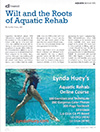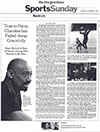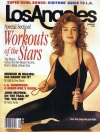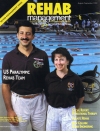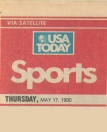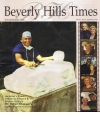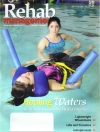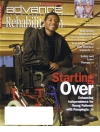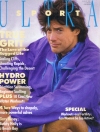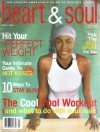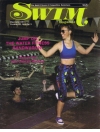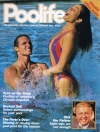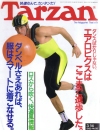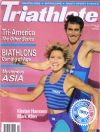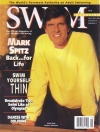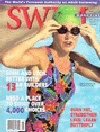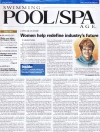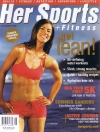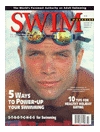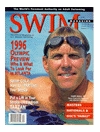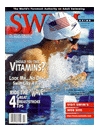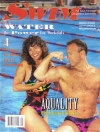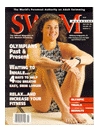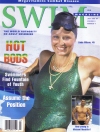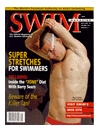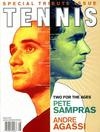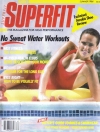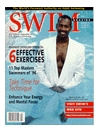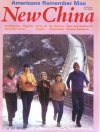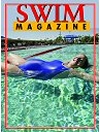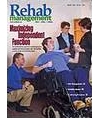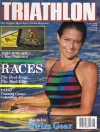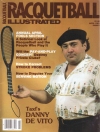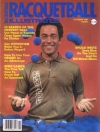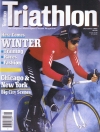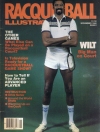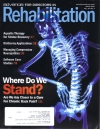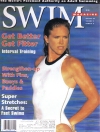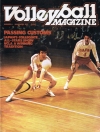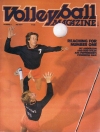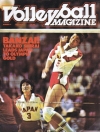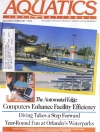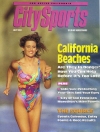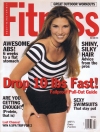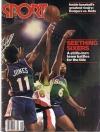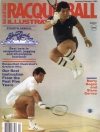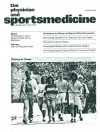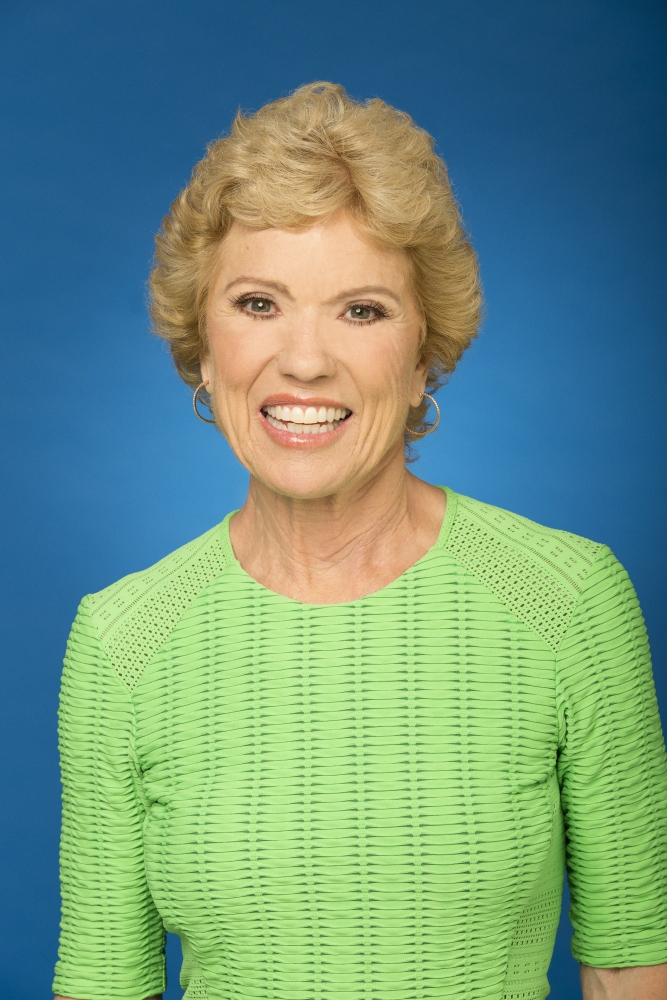
Lynda Huey
Lynda Huey, M.S., founder of Huey’s Athletic Network, is a former athlete and coach whose own injuries led her into the water to find fitness and healing. She was educated at San Jose State University where she starred on the track and field team during its golden years. She earned a masters degree in kinesiology, coached volleyball, field hockey, and track and field at several universities before writing her autobiography and starting her own business. She pioneered the use of water training with Olympic and professional athletes in the 1980s and 1990s. Her clients have included Florence Griffith Joyner, Wilt Chamberlain, Luc Robataille, Carl Lewis, Emeka Okafor, Valery Brisco, Gail Devers, the UCLA Women’s Track Team and the Chicago White Sox (for Bo Jackson). Entertainers have sought her out, including Sinbad, Cybill Shepherd, Paula Abdul, Raquel Welch, James Garner, Elliot Gould, Courtney B. Vance, and Josh Duhamel. She has written six books on water exercise, including the best-selling aquatic fitness book of all time, The Complete Waterpower Workout Book with Robert Forster, PT. She wrote Heal Your Hips and Heal Your Knees with the former Chief of Orthopedics at Cedars-Sinai, Robert Klapper, MD. She shot 10 videos and wrote 12 textbook chapters for her most recent work, Lynda Huey’s Aquatic Rehab Online Course. (See LyndaHuey.com) This course offers Continuing Education units for physical therapists and Con-Ed credits for aquatic fitness professionals studying her methods in over 20 countries.
She has written for most of American’s top sports magazines, hosted a sports show on KCRW, and worked for NBC at the Seoul Olympic Games. She has taught her methods on six continents, most recently in Brazil in 2014 and South African in 2018. She lectures regularly in Australia, Italy, and the U.S. and appears on TV in those countries.
Since 1993, Huey has combined her knowledge of working with injured Olympic and professional athletes with the expertise of physical therapists to create an excellent set of aquatic therapy protocols. Her protocols have been purchased by major hospital aquatic programs. Our eclectic mix of remarkable physical therapists offer orthopedic, rheumatological, and neurological patients a progressive environment in which to regain full function.
Lynda Huey, world-renowned aquatic rehab educator, brings aquatic rehab to life online in a twelve-lesson course that teaches her basic exercises and techniques.
Click Here for Details
Lynda Huey, world-renowned aquatic rehab educator, brings aquatic rehab to life online in a twelve-lesson course that teaches her basic exercises and techniques.
Click Here for Details
Lynda Huey, world-renowned aquatic rehab educator, brings aquatic rehab to life online in a twelve-lesson course that teaches her basic exercises and techniques.
Click Here for Details

AKWA Magazine, August / September 2021
Real Life: Case Study of a Catastrophic Knee Injury, by Lynda Huey
The woman in the grassy field didn’t see the large black German shepherd before he crashed into her and knocked her to the ground. Over ten minutes passed before she could roll over, slowly sit, and painfully stand with the help of the man who owned the shepherd.
AKWA Magazine, October / November 2016
Wilt and the Roots of Aquatic Rehab
Legendary basketball player Wilt Chamberlain would have turned 80 this summer. In 1999, he died of heart failure at the age 63. If he were still alive, I’m confident he would still be strong, fit, and continuing to be a huge proponent of aquatic rehab.
Time Magazine, August 1992
Engineering The Perfect Athlete, by Anastasia Toufexis
The pulsating industry of sports science is pushing the outer limits of human performance. The new formula: less pain, more gain. But beware of the hype and the hokum. Sweat still counts. Lynda Huey devised a water exercise program to help keep long jumper Mike Powell in shape after he had an emergency appendectomy just six weeks before the Olympic trials in 1988.
Rehab Management, August / September 1992
Swimming For the Gold, by George Wiley
It’s not just in competition that US athletes hope to find glory in the pool.
Since 1983, Lynda Huey, MS, has been helping high-profile athletes overcome injuries and stay in shape through the use of therapeutic aquatic exercise.
Beverly Hills Times, September 17th, 2003
An artists’s touch, by Suzanne Takowsky
Orthopaedic Surgeon By Day… Sculptor By Night…
Dr. Robert Klapper’s passion to create never stops!
Huey is America’s foremost authority on Water Exercise Rehabilitation. Her innovative & cutting-edge pool therapy programs help star athletes, sports enthusiasts & people suffering from chronic pain around the world.
Advance For Directors in Rehabiliation, January 2007
A long view of aquatic therapy shows the evolutionary progress, By Lynda Huey, M.S.
Using an aquatic environment for therapy and as a training method for athletes has come a long way since its early days in the 1980s. To get a better understanding of the current state of aquatic therapy, it’s important to take a look back to gain a historical perspective.
Swim Magazine, May / June 1995
Water Therapy for Muscles, By Lynda Huey, M.S.
A carefully-designed, low impact exercise program is an important factor in treating fibromyalgia. Swimming or other aquatic execise is ideal. In our aquatic therapy program, patients have been able to achieve full range of motion in their trunks and limbs, increase their strength, and improve their function.
Health Magazine, July 1989
Beyond the Breast Stroke, by Dawn Welch
Athletes in a variety of sports are taking to the water to recover from injury and improve performance. Lynda Huey, water training coach for the women’s track and field team at UCLA, has developed a program for some of the country’s top runners, including Olympic gold medalists Florence Griffith Joyner, Jackie Joyner-Kersee and Valerie Brisco.
Swim Magazine, May – June 1991
Water Power, by Kim Hansen
Water therapy is one of those “miracles” used in rehabilitating a whole range of sprains, strains, dislocations and fractures. More specifically, exercising in water is becoming the standard treatment for injured athletes. Water accelerates healing by improving circulation to the injured body part so that it does not stiffen up and lose all motion.
The Press-Enterprise, May 26th, 1996
You don’t have to swim… To get a workout in the water, by Lynda Huey
Think of a swimming pool as a complete gym – cardiovascular, strength training, stretching, says Lynda Huey. “Anyone who has had experience with water exercise understands that it’s a synthesis of the best of all worlds.” Any movement or technique done on land can be done in the water, says Huey, and you can do more repetitions because there isn’t as much impact.
Women’s Sports & Fitness, August 1987
Water Workout: Cool in the Pool, by Kevyn Allard
Water exercise is a wonderful workout at any level of fitness because it allows you to determine your own level of intensity. The water reacts to whatever resistance you apply – the harder you push against it, the harder it pushes back.
Advance for Directors in Rehabiliation, January 1998
Treating the Pain of Fibromyalgia in Water, by Lynda Huey
Fibromyalgia patients are notoriously deconditioned; they often can’t walk, use a bicycle, or go to the gym without incurring more pain. The water, however, helps improve fitness while simultaneously treating aches and pains. Water’s buoyancy virtually eliminates gravity’s pull on the body, which relieves stress on painful tissues and joints and provides an ease of movement not possible on land.
Great Looks, ‘Teen Special
Just Add Water
Water offers 3-D resistance. When you move arms and legs forward, they must go backward. No matter which way you move, you’re always working against the water. This means you get a well-balanced muscle workout, resulting in more pleasing, less bunchy muscle tone.
Fitness Swimmer, Winter 1997
Tips For Healthy Hips, by Lynda Huey
Water exercise is the best therapy for those recovering from either hip replacement surgery or arthroscopic hip surgery, a minimally invasive procedure that “cleans out” your hip joint. “You need to regain balanced strength in the muscles surrounding your hip joint as well as regain your hip’s full range of motion,” says Dr Robert Klapper. “This is best done in the water.”
Triathlete, February 1988
Water Running, It looks weird, but it works, by Bob Cooper
Water’s buoyancy lets you run, walk, jump, bounce, stretch, pivot – make any movement – without the jolts that could cause injuries if they were to occur on land. At the same time, water acts as a cushion for your weight-bearing joints; it is resisting you, causing your muscles to work harder than if you were simply moving your arms or legs through air.
Swim Magazine, September / October 1995
New Toys in Exercise, by Lynda Huey
Americans love toys. That’s why a sport as pure as water exercise couldn’t stay pure for long. What fun is it to simply take your suit and towel to the pool? Where are the gadgets to carry along to prove you belong to a sport?
World Tennis Magazine – August 1989
The Water Way with Lynda Huey, by Paul Cohen
Water workouts coincide with a person’s strength level; you provide the force and water will supply the proper amount of resistance. Using weights in water, unlike in the gym, is always an all-out effort because water exercise uses resistance in all directions, thereby promoting cardiovascular conditioning, body toning and strength.
Swim Magazine – January / February 1995
Water Rehabilitation, Indy Car Driver Into the Pool, by Lynda Huey
On July 29, 1994 Italian driver Alessandro Zampedri was taking a practice run on the Michigan 500 race track, commonly known as the fastest oval in the world. Between turns three and four he blew his front right tire and crashed. Water therapy treated his pain, stiffness, and muscle spasms in his cervical and lumbar spine area.
Swim Magazine – May / June 1994
A Water Healing Workout for your Lower Back, by Lynda Huey
Many of my water therapy patients come to me either trying to avoid back surgery or right after surgery. I’ve learned that standard swimming strokes can actually aggravate back problems. Lynda details the modifications that will let you continue swimming if you ever experience lower back pain.
Shape Magazine – May / June 1994
The Waterpower Workout, by Lynda Huey
There’s something magical about water workouts, and something magical about what they do for your body and soul. The magic lies in water’s resistance to body movement, its support of your body and water’s wonderful freshness. Regardless of your body type, weight or athletic ability, when you exercise in water you move with lyrical grace.
Swimming Pool / Spa Age Magazine – January 1996
Water as a Healing Factor with Lynda Huey and Wilt Chamberlain, by Eric Minton
Aquatic therapy is becoming a vital tool in the rehabilitation process. For example, athletes such as former NBA great Wilt Chamberlain, have found water speeds the healing process.
Aquatics Magazine – March / April 1996
Water as a Healing Factor, with Lynda Huey
When Wilt Chamberlain injured himself in 1985 while playing raquetball, Lynda Huey developed exercises he could do in his spa. “He had torn most of his triceps tendon away from the bone,” Huey said. After surgery and a cast, Chamberlain’s goal was to reverse the atrophy that had set in and rebuild strength and motion.
Rehab Management Magazine – March / April 1996
Water and Power with Lynda Huey, by George Wiley
Senior athletes with sports injuries may find that aquatic therapy is the best way to rehab injuries, according to Lynda Huey, MS, nationally recognized aquatic therapist and author of water workouts. My contribution lies in taking the vigorous program I designed for super athletes, a program for getting it all back, and applying that to the general post-op patient population.
Her Sports & Fitness Magazine – July / August 2006
Water Works, by Lynda Huey
When you think of aquatic fitness, do you picture a dozen women in shower caps armed with foam noodles? Or maybe an athlete relegated to jogging around in the pool to rehab a nagging injury? Sure, water exercises provide a low-to-no-impact workout for those who can’t tolerate pounding on their joints. But no matter how fit you are, workign out in the water can be a fun, challenging and high-intensity training routine.
Swim Magazine – July / August 1995
Wilt Chamberlain and the Water, by Lynda Huey
In 1989 Wilt Chamberlain again required surgery. This time he needed a high tibial osteotomy, which carved a wedge of bone out of the tibia (shin bone) and realigned the knee joint. There was no cast, only a brace on the leg. Therefore, once the incision had healed, Chamberlain began deep-water exercise to regain muscle strength and joint mobility.
Swim Magazine – July / August 1996
Gosdpeed: The Gail Devers Story, by Lynda Huey
Although Woddard didn’t swim, the water repeatedly saved her during the crash course training program. She used the water for a safe workout whenever pain would cancel or compromise a track workout. She sprinted full speed in the water even when a calf strain kept her off the track for a week.
Swim Magazine – November / December
Overuse Injuries in Deep Water, by Lynda Huey
They said you couldn’t get hurt in the water. They said the water was the safest place for anyone to do a fitness or therapy program. “They” included me. I had been saying it in lectures and in books for years: the water is a forgiving environment that cushions your weight-bearing joints even during the most strenuous of workouts.
Swim Magazine – May / June 1993
WaterPower Workouts: Exploding the Myth, by Lynda Huey
For stretching, water can’t be beat. Your body relaxes like nowhere else, and this promotes comfortable, rhythmic breathing which aids your stretching. Buoyancy belts hold exercisers suspended in an upright position for running or walking while performing an array of muscle-working exercises. The benefits of water training can be enormous – even for the fittest of the fit.
Swim Magazine – May / June 1996
Water Jumper, with Lynda Huey, by Brady Bingham
World record long jumper, Mike Powell believes that water workouts helped him reach the top of his field. Powell begins and ends every day of workouts by leaping into the water and working through a set routine of drills and exercises.
Swim Magazine – July / August 1994
Water Healing your Hips with Dr Robbert Klapper, by Lynda Huey
Dr Robert Klapper orders many of his hip surgery patients to the pool for rehabilitaiton. One of his most famous patients, ordered to do 2 hours a day of water exercises, is former NBA basketball star Wilt Chamberlain.
Swim Magazine – July / August 1993
Sport Specific Waterpower Workouts, by Lynda Huey
Anyone who has ever trained diligently as a runner knows the awful truth: about 20 percent of the time (or more) there will be injuries – some minor, some not so minor. Even swimmers, those stalwarts who have one and only one use for a pool, are beginning to realize the benefits of vertical rather than horizontal water exercise.
Tennis Magazine – April 1994
Water Workout For Fitness and Rehab, by Donna Doherty
Several years ago John Lloyd sustained his first hamstring injury at Wimbledon. He was surprised by how debilitating it was. While rest was the prescribed treatment, the last thing Lloyd wanted to do was stay completely immobile and risk muscle weakness and atrophy. But he also did not want to aggravate the injury. The solution? Water rehabilitation.
Superfit Magazine – Summer 1986
Get Wet! Let Water Add Magic to Your Summertime Workouts, by Lynda Huey
Not long ago, Olympic high jumper Dwight Stones told a nation-wide television audience: “I do 90 percent of my cardiovascular work in a swimming pool and I don’t have to worry about getting injured because water provides a nonstress environment. Other Olympic-level athletes have also discovered the versatility of water training.
Swim Magazine – May / June 1994
A Water Healing Workout For Your Lower Back, by Lynda Huey
By now the statistic has become commonplace: eight out of ten American adults experience lower back pain. Standard swimming strokes can actually aggravate back problems. So here are the modifications that will let you continue swimming if you ever experience lower back pain.
New China Magazine – Spring 1977
Read Lynda Huey’s 2011 Blog about her 1977 trip to China:
Rehab Management – June / July 1997
By Land or By Sea, Lynda Huey combines aquatics and land therapy for total body fitness, by Jeffry Still
In the summertime, everybody wants to cool off in the pool. But in Southern California, fitness seekers and those recovering from injuries are doing more than just relaxing and getting a tan – they’re getting a workout and regaining function with one of aquatic therapy’s leading proponents, Lynda Huey, MS.
Advance For Directors in Rehabilitation – September 2002
Best of Both Wolds – Combining aquatics with land exercise effectively reduces back pain, by Lynda Huey
Back pain is more than just a minor annoyance. It’s the leading cause of disability in men over 45 and the second most common cause of missed workdays. It’s also the third most frequent reason for surgical procedures and the fifth most frequent cause of hospitalization. Incorporating aquatic therapy with a land-based program is the key to our approach.
Swim Magazine – March / April 1994
Finding Joy and Meaning in Water, by Lynda Huey
My Achilles tendon had told me loudly I couldn’t race at the World Masters Track and Field Championshps. So I decided to take to the open water for adventure and strenuous exercise. I drove past Naples and caught a boat to the island of Ischia. I swam along the shore past brightly-colored hotels and their matching rows of beach chairs and umbrellas.
Triathlon Magazine – May / June 1985
By Leaps and Bounds, by Lynda Huey
Complete Body Fitness: that can be your key to reaching top physical performance while avoiding injury. To attain that complete body fitness, however, you need to develop not only cardiovascular and muscular endurance, but also flexibility and “explosive” power.
Racquetball Magazine
Case History: The Problems Behind Racquetball Elbow, by Lynda Huey
Dr. Frank Jobe, a noted suregeon who has treated many well-known professional athletes, arrived first at Centinela Hospital in Inglewood, CA. He was shortly followed thereafter by former professional racquetball player Jay Jones. Jobe had operated on Jones’ right arm to repair damages from racquetball elbow.
Triathlon Magazine – November 1985
On The Right Track, by Lynda Huey
By now you’ve no doubt learned the importance of track work in developing your inner pace clock and increasing your running speed. Yet you may be reluctant to venture onto that track, feeling out of place there. There are a few rules and guidelines that will make speed workouts easier for you and everyone else.
Racquetball Magazine
Wilt: Racquetball’s BMOC (Big Man on Court), by Lynda Huey
Wilt Chamberlain needed a workout. He had tried finding some volleyball action at U of Oregon, but his larger-than-life presence had stopped play. He even drew a crowd when he tried to run along the Willamette River. He wanted a good work out, but he wanted to remain unseen, if possible. A fellow reporter handed him a small unfamiliar racquet and pointed to the racquetball courts.
Sport Magazine
World’s Tallest Reporter, by Lynda Huey
When the U.S. Olympic track and field trials were held in Eugene, Ore., SPORT dispatched an unusual pair of reporters to cover the event. One was a reasonably experienced sportswriter named Lynda Huey, the sprinter-author of a A Running Start. The other was a cub reporter named Wilt Chamberlain.
Advance For Directors in Rehabilitation Magazine – April 2009
Making Waves, Aquatic Therapy Should Have a Place in Stroke Rehab, by Jennifer Haynes
Although post-stroke treatment is usually performed in a traditional land setting, a pool environment can provide even greater opportunities for success. The pool (deep and shallow water, stairs, walls, bars) can be a beneficial place to begin outpatient rehab.
Swim Magazine – November / December 1994
Water Healing Your Foot and Ankle, by Lynda Huey
This article is for all those swimmers who make me jealous with their efficient kick. Most of you won’t develop the overuse injuries that many land athletes do – the sprains and strains that come from jumping, hurdling, running, and kicking. Nevertheless, I’ve outlined the most common injuries that happen to the foot and the ankle of a swimmer.
Volleyball Magazine
The Selznick Chronicles, by Gene Selznick with Lynda Huey
Any cursory look at the history of American volleyball will turn up a recurring name: Gene Selznick, a name thickly coated with alternate layers of glory and controversy. Selznick is the 14-time All-American who was blackballed fron the United States Volleyball Association for life.
Volleyball Magazine
The Selznick Chronicles, by Gene Selznick with Lynda Huey
Warning: The USVBA Board of Directors has determined that printing the “Selznick Chronicles” is dangerous to our credibility. Depsite this caution and an avalanche of mail questioning points of fact and expressing moral indignation, we, like good chain smokers, continue.
Volleyball Magazine
The Selznick Chronicles, by Gene Selznick with Lynda Huey
Say what you will about Gene Selznick – and most everyone does – he is one of the most colorful, controversial and talented athletes in the annals of American volleyball. But while such honors as a berth on the press All-World team and 14 U.S. Volleyball Association All-America selections serve to underscore his athletic skills, the key descriptive word is controversial.
Volleyball Magazine
The Selznick Chronicles, by Gene Selznick with Lynda Huey
Innovator, scoundrel, brilliant tactician, S.O.B., living legend. As incongruous as these adjectives may seem, they have all been called upon at one time or another to describe Gene Selznick. His impact on American volleyball is undeniable. His stance on and off the court has always been a love-him-or-hate-him proposition.
Aquatics International Magazine – January / February 1994
Water Fitness Association Presents Awards
Top honors given at the conference went to Lynda Huey, author of The Complete Waterpower Workout Bool and owner of Huey’s Athletic Network, Santa Monica, Calif. Lynda Huey received the C. Carson Conrad award at the 6th Annual National Water Fitness and Aquatic Therapy Conference.
City Sports
The Waterpower Warm-Down, by Lynda Huey
When you finish a high-intensity run, bike ride, or weight workout, your muscles feel heavy. If your exercise was stopped abruptly, the muscles are left with large volumes of waste-laden blood. The faster this blood is returned to the heart, as when you perform a warm-down, the faster your body can recover from the workout.
Fitness
Just Add Water, by Lynda Huey and Robert Forster
Hard-core exercisers may wonder whether deepwater exercise, which looks so relaxing and pleasurable, qualifies as a “workout” in the heart-thumping, muscle-stressing sense. But the beauty of deepwater exercise (water at least as deep as you are tall) is that you can train as gently or as powerfully as you wish.
Swim Magazine – September / October 1994
Real Men Are Upright, Too, by Lynda Huey
Anyone knows real men put their heads down in the pool. They swim, stroke, and kick. They don’t put on cheater floaties and exercise with their heads up in the pool. That’s what girls do. Sissies. Little old ladies in shower caps. People who can’t swim. People who don’t know how to race, to compete. Notreal men.
WomenSports Magazine – March 1976
Wilt! A Big Hand For The Little Ladies, by Jackie Lapin
The name is Chamberlain and as far back as 30 years ago the name was synonymous with dominance in sports. It was a sibling one-two punch, Barbara with the speed and grace of Wilma Rudolph, Wilt with the size and power of a teenage Charles Atlas. The sport was track, and together they dominated every elementary school meet.
L.A. Woman Magazine – November 1978
Miki Gorman; L.A.’s Magnificent Marathoner, by Lynda Huey
Miki Gorman is one of the most respected of female distance runners, and she has established world records in both the New York and Boston Marathons. None of which might ever have happened if her health, and her husband, had not made certain demands.
The Runner Magazine – March 1981
Back on the track – John Smith is out to conquer to the world – again, by Lynda Huey
John Smith. The all-American anonymous name. But this particular John Smith has been anything but anonymous. It has been eight years since he competed in the Munich Olypmics, four years since he ran “pro” and nine years since he ran 44.5 for a world record that still stands today.
Racquetball Magazine
Acupressure and Body Balancing, by Lynda Huey
Dr Leroy Perry has become a respected chiropractor to many of America’s top athletes. Golfers bring him their aching backs, tennis players and racquetball players bring him their strained elbows, and swimmers, football players and track athletes show him an assortment of ailments. Athletes of every sort flock to him for preventitive medicine techniques, body-balancing and treatment of athletic injuries.
SPORT Magazine – August 9, 1977
“Oh, man, we blew it again”, by Isiah Robertson with Lynda Huey
Said the Rams’ veteran All-Pro linebacker after one more time, his team failed in the NFL playoffs. “I’m not putting the blame completely on [quarterback] Pat Haden,” Robertson says in his diary of last season, “but I think that if Joe Namath had been healthy, Joe could’ve done it.”
Runner’s World Magazine – January 1977
Slowing Down & Looking Around, by Lynda Huey
What power! What exhilaration! For the short seconds of absolute exertion while sprinting, the rest of the world is motionless as the internal clockworks of this fine machine glory in their precision and execution. Speed becomes more a process and thrill of exactness than the objective measure of meters and milliseconds.
Racquetball Magazine
Arthroscopic Microsurgey, injured racquetball players can now return to the court in a matter of days, by Lynda Huey
“We’re working on a way to repair cartilage but that’s in the future” says Dr Daniel Silver of Westwood Calif who first coined the term “arthroscopic microsurgery.”



